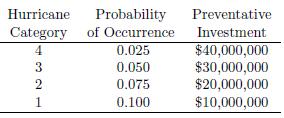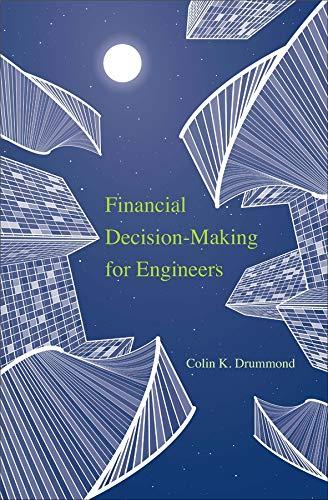During Hurricane Sandy in October 2012, there was structural damage done to the Ninth Street Marina (NSM)
Question:
During Hurricane Sandy in October 2012, there was structural damage done to the Ninth Street Marina (NSM) and this is the third time since 1992 this has happened. Generally the contract engineers for the insurance company claim that the design safety margin is so large that, "Don't worry, the pier is built like a rock." The city disagrees and has decided to help tourism by totally rebuilding the marina to "really" keep the damage from occurring. The local port authority has proposed the probability of Sandy (in some form of hurricane level) coming back as shown below, along with the investment required to build a pier to withstand the hurricane level cited.

As in the case of the Terminal Tower incident of Problem 8.5, there is bond money to finance the project earning $5 \%$ annually. If the average damage to the pier during a hurricane is $\$ 172,000$, which hurricane protection level should the city advocate?
Data from problem 8.5
In July 2013, heavy rains in Cleveland caused a retaining wall inside the Terminal Tower for the Regional Transit Authority (RTA) train to collapse. It was estimated that between repairs and lost ticket sales, the occurrence of this highly unlikely event was going to cost the city about $\$ 350,000$. It had been about 15 years since a similar accident occurred, and the statistics jocks estimate that something like this should only occur once every 25 years. The city has proposed rebuilding the wall with an additional special storm sewer line that would prevent the retaining wall from ever collapsing again. Of course, the problem is that the storm sewer upgrade would cost an additional $\$ 35,000$, and would also require annual maintenance of about $\$ 1,000$ per year. Given that the storm sewer upgrade could reasonably be expected to have a life of 15 years before it has to be replaced, should the storm sewer upgrade be implemented? Assume the repairs are funded with bond money paying $5 \%$.
Step by Step Answer:






